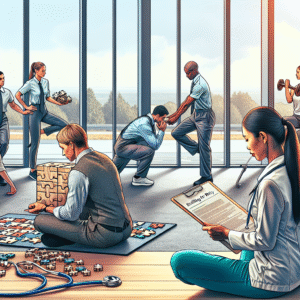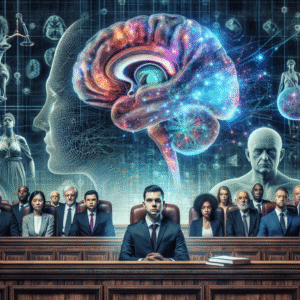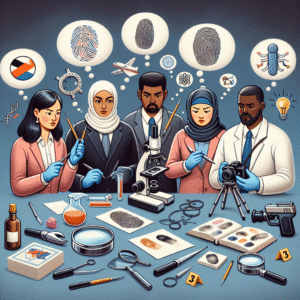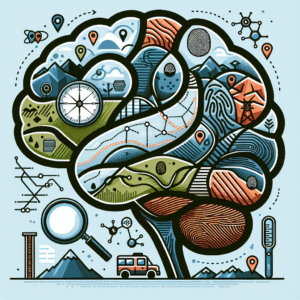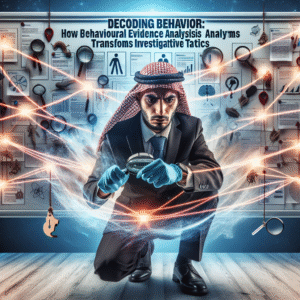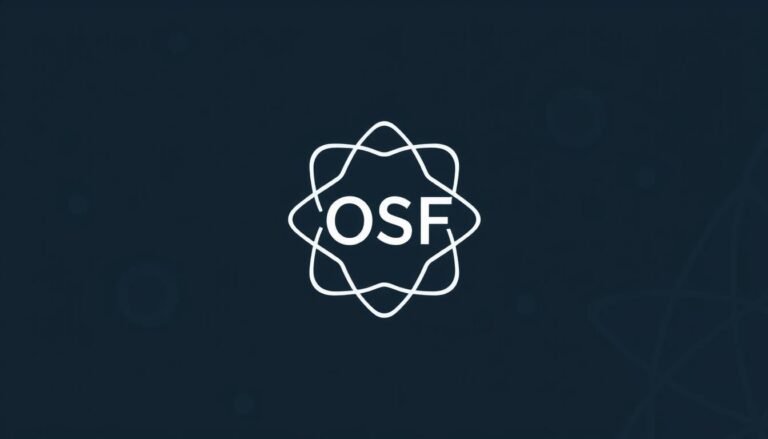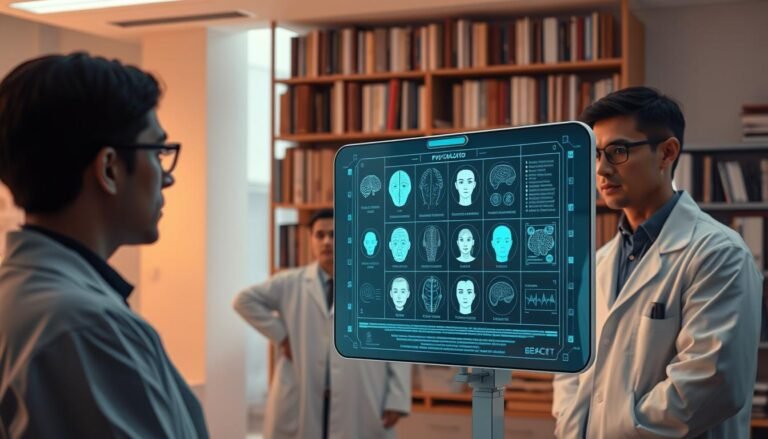Introduction Imagine walking through a crowded market and suddenly becoming acutely aware of someone’s nervous fidgeting, the way they avoid eye contact, or their abrupt changes in tone. What if you could decode these subtle signals to better understand their emotions and intentions? Welcome to the world of behavioral evidence analysis, where the intricacies of human behavior are laid...
Hostage Negotiation
Introduction In the realm of criminal justice, the term "competency" is a critical factor that can significantly influence the outcomes of legal proceedings. The journey from being a defendant to reaching a determination of competency is a multifaceted process, steeped in psychological assessments and legal standards. Understanding this journey not only sheds light on the complexities of our legal...
Introduction Workplace violence is a pressing issue that can have devastating impacts on both employees and organizations. From verbal abuse to physical attacks, the spectrum of violence in the workplace is alarmingly broad. According to the Occupational Safety and Health Administration (OSHA), businesses must act to safeguard their employees against potential threats, highlighting the urgency of Preventing Workplace Violence:...
Introduction The courtroom drama surrounding legal trials engages with the vast complexities of human behavior, morality, and mental health. Among the most contentious issues is the insanity defense—a legal argument that has stirred public opinion, influenced laws, and reshaped the conversation about mental illness. This in-depth exploration of High-Profile Cases that Shook Public Perception of the Insanity Defense delves...
Introduction In the ever-evolving landscape of workplace safety and productivity, the concept of fitness for duty has never been more crucial. Employers are tasked not only with ensuring that their teams can perform their roles effectively but also with safeguarding the health and well-being of their employees. Evaluating Fitness for Duty: A Comprehensive Guide for Employers serves as an...
Introduction In a world flooded with information, making sound judgments has never been more vital. Our decisions shape our lives—from the trivial, like choosing a breakfast cereal, to the monumental, such as investing in stocks or selecting a career path. However, lurking behind these decisions are cognitive biases, invisible forces that shape our perceptions and judgments without us realizing....
Introduction Imagine being detained by law enforcement, questioning your rights and understanding of the situation. The moment can be life-altering, with profound implications for your future. One of the cornerstones of ensuring fair treatment in the justice system is the concept of Miranda competence. The term may sound legalistic and intimidating, but it fundamentally serves to protect individual rights...
Introduction The courtroom has long been viewed as the ultimate battleground for justice, where truth collides with perception and reality can be as elusive as it is essential. Yet, when a witness takes the stand, one question often remains: how reliable is their testimony? This brings us to the heart of the matter: Beyond the Witness Stand: The Role...
Introduction Imagine a dimly lit room where the weight of guilt hangs in the air, and the ticking clock intensifies the tension. In this high-stakes environment, the art of interrogation unfolds—an intricate dance of psychology, strategy, and ethics. The Art of Interrogation: How Techniques Shape Justice is not just a matter of extracting confessions; it’s about unearthing the truth...
Introduction In the realm of criminal justice, few issues evoke as much debate and concern as the phenomenon of false confessions. The title From Coercion to Conviction: How Police Interrogation Tactics Lead to False Confessions encapsulates a troubling reality—how supposed methods of extracting the truth can, paradoxically, lead to wrongful convictions. The importance of understanding this topic extends...
Introduction In an era where wrongful convictions and the reliability of eyewitness testimony are under intense scrutiny, Understanding Lineup Procedures: A Guide for Legal Professionals emerges as not just relevant, but crucial. Lineups can be pivotal in identifying suspects, yet they also bear the risk of misidentification. This guide aims to demystify the processes involved in lineups, providing legal...
Introduction Imagine sitting across from someone you trust, only to feel an undercurrent of doubt about the sincerity of their words. What if you could peel back the layers of their communication to reveal the truth lurking beneath? The subtleties of nonverbal communication offer an essential glimpse into the realm of deception detection. Behind the Mask: The Role of...
Introduction: The Fragility of Memory Picture this: You’re in a crowded room, surrounded by friends reminiscing about a shared vacation. Suddenly, someone mentions a funny incident that you clearly remember differently. Confusion ensues, and soon you’re questioning your own recollections. This scenario highlights an unsettling truth about human memory—it’s not as reliable as we might think. Welcome to The...
Introduction Aggression is a complex behavior that has intrigued scientists, psychologists, and philosophers for centuries. With increasing rates of violence in society, understanding aggression has never been more essential. Cognitive and Biological Perspectives on Aggression: Bridging the Gap explores the multifaceted nature of aggression, considering both cognitive processes and biological underpinnings. This article will uncover how these perspectives interact,...
The Importance of Understanding Child Witnesses In the courtroom, the testimonies given by witnesses can shape the outcome of a trial. Among these witnesses, children introduce a unique set of dynamics that warrant careful consideration. In the courtroom: understanding the strength and limitations of child witnesses is essential for legal practitioners, jurors, and society at large. As vulnerable members...
Introduction Domestic violence is a pervasive issue that affects countless individuals and families, often leaving devastating emotional and physical scars. According to the National Coalition Against Domestic Violence, nearly 1 in 4 women and 1 in 9 men experience severe intimate partner physical violence. This article, “Navigating Safety: Essential Resources for Those Affected by Domestic Violence,” aims to...
Introduction: The Weight of Understanding Imagine waking up one day, only to find your world has changed forever. Brain injury can flip life upside down in an instant: relationships can fray, careers can crumble, and dreams can shatter with a single incident. For countless victims, navigating the aftermath is an emotional and financial labyrinth, dominated by uncertainties. That’s why...
Introduction Imagine looking over your shoulder every time you step outside, heart racing with every shadow that passes. For many individuals, this is a daily reality—a chilling consequence of being stalked. While stalking is often understood in its immediate, tangible forms, the hidden, long-term psychological impacts are less frequently discussed. Behind Closed Doors: The Long-Term Psychological Impact of Stalking...
Introduction Imagine walking into a courtroom, not armed with witness testimonies or physical evidence, but with a scan of your brain that reveals deeper truths about your mental state and intentions. This is more than a futuristic concept; it’s the compelling reality of forensic neuroimaging, an emerging field that is poised to revolutionize legal trials. As science and technology...
Introduction In a world where traditional justice systems seem to emphasize punishment over healing, Restorative Justice: A Path Forward for Victims and Offenders emerges as a beacon of hope. This innovative approach to justice redefines the relationship between victims, offenders, and the community, focusing on healing and reconciliation rather than mere retribution. Imagine a system where victims find a...
Introduction Imagine a courtroom where the most compelling evidence isn’t just a confession or a surveillance video, but the very signals emitted by a person’s brain. The intersection of neuroscience and law is no longer the realm of science fiction; it’s a burgeoning field of study impacting judicial decisions, jury perceptions, and the understanding of criminal intent. This article,...
Introduction Imagine a world where victims of crime are not sidelined but rather integrated into the criminal justice process, their voices amplified and their needs prioritized. This vision is not just a utopian aspiration; it represents a critical shift in how we view crime, justice, and rehabilitation. In recent years, there has been an increasing awareness of the value...
Introduction Imagine a world where the voices of the deceased still resonate—we can grasp their struggles, triumphs, and traumas even after they have left this earthly realm. This isn’t the realm of fantasy but a method steeped in psychological exploration: psychological autopsies. Beyond the Grave: How Psychological Autopsies Illuminate Untold Stories serves as both a compelling narrative and a...
Introduction Picture this: You’re standing at the precipice of a decision that could change the course of your life. Should you invest in that new startup? Quit your stable job to pursue your passion? Understanding the psychology of risk and how perception influences decision-making is crucial in today’s uncertain world. The stakes are higher than ever, and our decisions...
Introduction Imagine walking into a courtroom, your heart racing, palms sweaty, as your mind races back to the trauma you endured. For many, this scenario isn’t just fictional; it’s a harrowing reality shaped by the invisible scars of Post-Traumatic Stress Disorder (PTSD). The Silent Struggle: How PTSD Affects Legal Outcomes delves into this complex interplay, exposing the nuances between...
Introduction Imagine a world where individuals who have previously faced incarceration are not just reintegrated into society but thrive in it. This is not a far-off dream but a possible reality if we embrace innovative approaches to combatting recidivism. Reforming the System: Innovative Approaches to Combatting Recidivism are not merely aspirational but crucial for building safer communities and providing...
Introduction In today’s fast-paced world, trauma is more prevalent than ever—spanning from fleeting experiences to profound life-altering events. Yet, despite its widespread impact, trauma remains one of the most misunderstood and under-assessed issues in mental health. This is where our journey begins: "Beyond the Surface: A Comprehensive Guide to Trauma Assessment." Understanding trauma isn’t merely about identifying symptoms; it’s...
Introduction In today’s volatile world, the rise in juvenile crime has become a concerning issue for communities across the globe. Traditional law enforcement approaches often fall short, leaving neighborhoods to grapple with spiraling crime rates and damaged youth potential. However, a powerful wave of hope is rising from the grassroots level: community solutions that address the root causes of...
Introduction In an era defined by advances in technology, shifting societal values, and ongoing debates about human rights, the topic of capital punishment remains both relevant and contentious. The practice of executing individuals for serious crimes evokes powerful emotions, ethical dilemmas, and multifaceted discussions surrounding justice, deterrence, and moral responsibility. This article, Weighing Justice: An In-Depth Evaluation of Capital...
Introduction Murder, a word that sends shivers down our spines, holds a puzzling position in human behavior. How can a person, once seemingly ordinary, plunge into the depths of violence? The journey from desperation to delusion in the minds of murderers is a complex tapestry woven with threads of psychological, sociopolitical, and emotional factors. Understanding this journey is not...
Introduction In the complex world of criminal justice, one element stands out as an essential tool for reform and change: compassion. The Power of Compassion: How Sentencing Mitigation Influences Justice is not just a compelling phrase; it is a transformative approach that emphasizes understanding and mercy amidst the machinery of law. As societies grapple with the implications of punitive...
Introduction In a world where technology permeates every aspect of our lives, the implications are far-reaching—none more so than in the realm of crime scene investigation. The digital footprints we leave behind in our daily activities have morphed from simple data points to vital pieces of evidence in solving crimes. Digital Footprints: How Technology is Transforming Crime Scene Investigation...
Introduction In an era of rapid technological advancement and evolving global threats, understanding threat assessments can be the difference between a secure organization and a vulnerable one. From cyberattacks to workplace violence, the threats that organizations face today are diversifying and becoming more sophisticated. In this comprehensive guide, "Understanding Threat Assessment: A Comprehensive Guide for Organizations," we will explore...
Introduction In a world where understanding human behavior is increasingly crucial, the field of Behavioral Analysis has emerged as a game-changer. Whether in educational settings, healthcare, or corporate environments, knowing how to apply behavioral analysis can lead to transformative outcomes. Behavioral Analysis in Practice: Case Studies and Real-World Applications is an area ripe for exploration, offering definitive insights into...
Introduction In a world that is increasingly interconnected yet culturally diverse, the field of forensic science faces unique challenges, particularly when it comes to evidence collection. The phrase “Forensic Challenges: Understanding Cultural Differences in Evidence Collection” encapsulates the complexities involved in navigating cultural nuances during investigations. As societal norms and values can vary widely across cultures, the methodologies employed...
Introduction In a world filled with lies, half-truths, and deception, the ability to detect dishonesty can be a powerful tool. Whether in psychological evaluations, criminal investigations, or everyday interactions, understanding how to decipher truth from falsehood is essential. Decoding Deception: The Forensic Psychologist’s Ultimate Guide to Detecting Lies serves as a comprehensive resource for anyone interested in the intricate...
Introduction Forensic psychology sits at the unique intersection of law and mental health, blending the principles of psychology with the complexities of the legal system. As professionals in this field engage with high-stakes evaluations, criminal cases, and the often murky waters of human behavior, they frequently encounter ethical dilemmas. Navigating the Gray Areas: Ethical Dilemmas in Forensic Psychology is...
Introduction In a world still grappling with the complexities of crime and justice, understanding the mind of a criminal has never been more vital. Profiling the perpetrator: how investigators use behavioral analysis has become an essential tool in modern law enforcement. With advancements in psychology and technology, detectives can now delve deeper into criminal behavior than ever before. From...
Introduction Imagine a court system designed not to punish, but to heal. This profound shift is currently unfolding across the United States and other parts of the world, where mental health courts are emerging as an essential component of the justice system. In this in-depth exploration of "Transforming Justice: How Mental Health Courts are Reshaping Legal Outcomes," we will...
Introduction In the complex tapestry of society, crime emerges not merely from individual moral failings but rather from the intricate interplay between cultural norms, values, and societal structures. The topic of The Role of Culture in Crime: Analyzing Cultural Criminology demands our attention, not just for academic pursuits but for practical implications that can shape policy and preventive measures....
Introduction Every year, millions of individuals confront the harsh realities of substance abuse, a challenge that extends beyond the individuals involved, impacting families, communities, and society at large. Understanding substance abuse evaluation becomes not just an academic exercise but a crucial step on the path to recovery and healing. This article serves as a comprehensive guide to unravel the...
Introduction In an ever-changing world, the phenomenon of youth and crime has taken center stage in societal discussions. With rising headlines of juvenile delinquency, it becomes increasingly essential to scrutinize the roots of this troubling issue. What drives young individuals towards criminal behavior, and how can we change this narrative for future generations? This article sheds light on the...
Introduction Have you ever been convinced of a memory that turned out to be completely false? Perhaps you recall a childhood event that everyone insists never happened, or you might find yourself misremembering someone’s words or actions. These phenomena aren’t just quirks of memory; they’re deeply rooted in the science of psychology. In this article, we dive into Unraveling...
Introduction Antisocial Personality Disorder (ASPD) is a complex and often misunderstood mental health condition. Characterized by a pervasive pattern of disregard for the rights of others, impulsivity, and sometimes dangerous behaviors, it paints a unique picture of what living with ASPD entails. The phrase "From Diagnosis to Recovery: The Journey of Living with Antisocial Personality Disorder" encapsulates not just...
Introduction In a world defined by crises and conflict, the daunting task of hostage negotiation stands out as one of the most complex and delicate forms of communication. The stakes are incredibly high; lives hang in the balance, and every word carries the potential of life or death. Understanding the dynamics of hostage negotiation is not merely an exercise...
Introduction Imagine walking into a serene coffee shop, only to bump into a charming stranger with an unsettling aura. This character could easily be the brainchild of a writer, drawing from the vivid, yet often exaggerated, portrayals of psychopaths in popular media. The representation of these individuals has evolved dramatically over the years, contributing to both our understanding and...
Introduction In a world increasingly marked by division, violence, and extremism, understanding the factors that lead individuals to radicalization has never been more relevant. The implications of radicalization extend beyond individual lives, affecting communities, nations, and global stability. This guide is designed to delve deep into the roots of radicalization, offering a comprehensive assessment framework that can help mitigate...
Introduction The chilling phenomena of serial killers have long captivated our collective psyche, sparking debates in psychology, criminology, and even pop culture. Among the myriad factors that contribute to the development of these individuals, one stands out starkly: empathy—or rather, its absence. In this article, we delve into "Empathy and the Absence Of: How a Lack of Emotion Shapes...
Introduction In an increasingly interconnected world, the specter of terrorism looms larger than ever. With each attack reported, society finds itself grappling with profound questions: What motivates individuals to commit acts of extreme violence? What psychological drivers are behind these perilous choices? Understanding these complexities is essential for nuanced approaches to prevention and intervention. This article delves into The...
Introduction Imagine a crime scene: the atmosphere is thick with tension, the detectives are on high alert, and every detail could hold the key to solving the case. In such moments, one term often resonates — criminal profiling. It’s not just a tool for law enforcement; it’s a fascinating intersection of psychology, behavioral science, and investigative strategy. In a...
Introduction The digital landscape has evolved into a double-edged sword, providing innumerable benefits while simultaneously harboring threats that can devastate individuals, businesses, and even nations. As cybercrime grows exponentially, understanding the villains behind the screens becomes increasingly essential. Inside the Mind of a Cybercriminal: Unpacking the Psychological Drivers of Online Crime takes the reader on an insightful journey into...
Introduction The landscape of justice in modern society is undergoing a seismic shift. As we further grapple with issues of equality, fairness, and representation, feminist perspectives emerge as a critical lens through which we can examine and transform the criminal justice system. This article explores how redefining justice through feminist insights can create more equitable and effective systems, addressing...
Introduction In an age where crime often feels omnipresent, law enforcement agencies continually seek innovative methods to enhance their investigative capabilities. Among these strategies, one stands out as both transformative and crucial: geographic profiling. This fascinating field combines geography, psychology, and investigative science to create a map of potential criminal behavior. Here, we dive deep into the realm of...
Introduction: The Ever-Evolving Landscape of Crime Crime is not as static as it may appear. It evolves, influenced by various social, psychological, and environmental factors. Crime Across the Ages: How Life Transitions Influence Criminal Behavior unveils the dynamic nature of criminal actions and behaviors as they relate to significant life changes. From adolescence to midlife crises, these transitions often...
Introduction In today’s complex world, where crime can often feel random and chaotic, understanding human behavior is paramount for effective investigation. Decoding Behavior: How Behavioral Evidence Analysis Transforms Investigative Tactics offers us a glimpse into the transformative power of analyzing actions and psychological patterns. This approach has broad applications in criminal justice, helping investigators not just to solve cases...
Introduction Imagine walking down a familiar street, where neighbors greet each other with warm smiles, and children play in the park without fear. This idyllic scene is not just a product of good fortune; it is a result of strong community support—a key factor in crime desistance. When individuals find encouragement and resources within their communities, the rates of...
Introduction In an era where corporate landscapes are constantly evolving, the conversation around workplace safety has never been more crucial. As employees spend the majority of their waking hours in offices, understanding workplace violence: the hidden threat in today’s offices is paramount. This topic impacts not only the emotional and psychological well-being of employees but also the overall productivity...
Introduction Imagine a world where breaking news travels faster than the speed of light, where every tweet can spark a nationwide dialogue, and where the perception of crime is shaped not only by traditional media but also by the collective voices of millions online. This is the reality we live in today. The transformative power of social media has...
Introduction In today’s fast-paced and demanding work environment, ensuring employee health and safety has never been more critical. The concept of "Fitness for Duty" serves as a beacon, guiding organizations to not merely meet regulatory standards but to advocate for the well-being of their workforce. Understanding Fitness for Duty: Ensuring Employee Health and Safety is an essential endeavor for...
Introduction In today’s digital age, the media wields unprecedented influence over public perception, particularly in the realm of crime reporting. The coverage of crimes can oscillate between compassionate advocacy for victims and sensationalized narratives that provoke panic and outrage. This leads us to explore The Double-Edged Sword: Media Advocacy Versus Media Sensationalism in Crime Reporting. As crime stories permeate...




